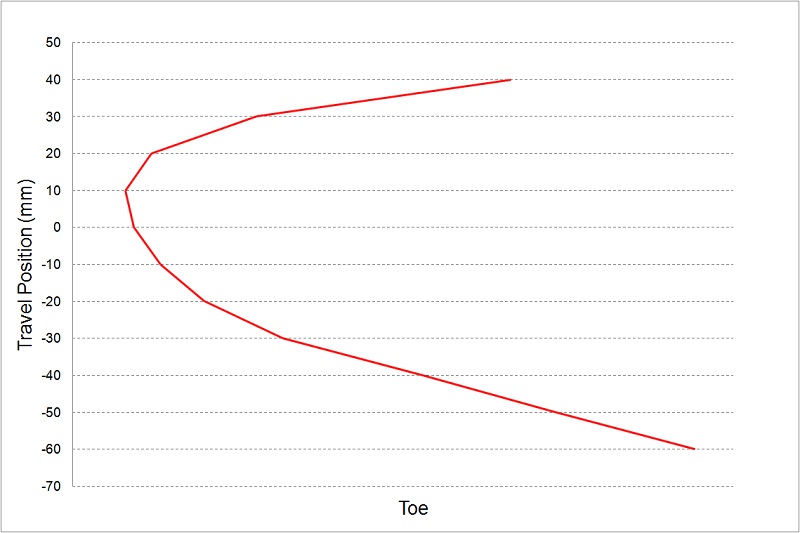We like to collect data here at Honed, so as one of the steps in understanding the Honda double wishbone front suspension we’ve started by measuring Honda Civic bumpsteer behavior, to see what we can learn and what setup changes could be made to improve things.
The car in question is a 1997 Honda Civic VTiR. For those reading in other parts of the world, it’s roughly equivalent to a Japanese market SiR, with a B16A2 fitted from the factory. The relevant modifications are a set of MCA height adjustable coilovers and Hardrace adjustable control arms. The ride heights were measured as approx. 300mm measured vertically from hub centre line to the wheel guard.

The vehicle is setup up with our budget bump steer gauge, a laser cut steel plate, and standard dial gauges with magnetic bases. The suspension is then cycled through it’s travel and the gauge values noted, and with a bit of addition, subtraction and trigonometry, the toe change can be calculated.

The measured bump steer is shown below. Toe in is positive and to the right of the graph. Note that the measurements stop at 40mm of bump travel as the suspension ran out of travel just after this point, due to the aftermarket upper control arms contacting the shock tower.

This demonstrates that when an EK Civic is lowered to a ride height typical of a track goer, the factory steering geometry produces pronounced toe in during bump travel. The end result is going to be noticeable toe in when the front dives under brakes and turning into a corner, which is going to translate into poor turn in response, because the toe in will tend to stabilise the front wheels giving an understeer tendency. Toward corner exit as the vehicle pitches rearward the front tyres will toe out, making the vehicle unstable and exacerbating any torque steer. This is in contrast to the behaviour at OEM ride height, which is toe out to give crisp turn in.
In the coming weeks we’ll be correcting the bump steer on this Civic back to near stock behaviour, and we’ll report back on what the owner thinks after he’s tested the new parts on track.
